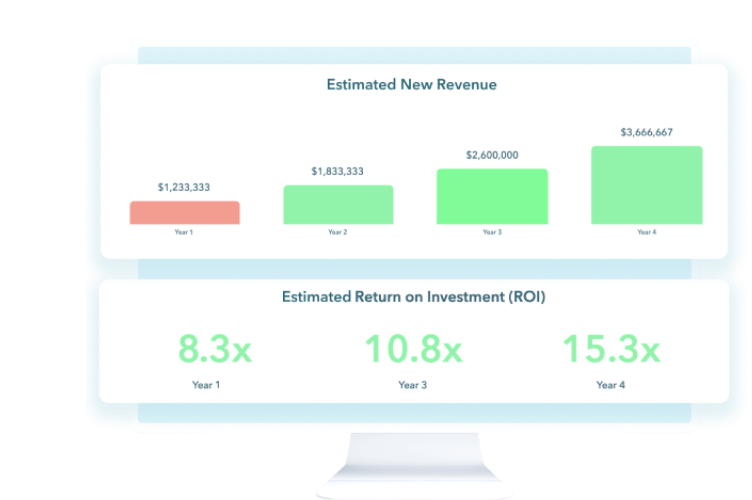 1,012 views
1,012 views 1902 Views
1902 Views  4 min read
4 min readWho are the health and medical professionals visiting your company website? Imagine what you could do with that information! You could decide if they are potential customers, and your sales force could close more sales. In this article, you’ll learn how to use marketing in healthcare ehr to identify who’s visiting your website. Unfortunately, we’ve found that most Electronic Health Record (EHR) software marketers can’t identify the people visiting their companies’ websites. Many Electronic Health Record (EHR) software marketers rely solely on Google Analytics. While that’s a useful tool, it doesn’t offer much help in qualifying your site’s traffic:
The good news is that there are several tools available for answering those questions. There are also strategies you can use that encourage visitors to share information about themselves. And, no… we aren’t talking about boring contact forms or “Free Demo” buttons. Regardless of what kinds of health and medical professionals are visiting your website, a more thorough understanding of their activity will help you qualify better leads and close more satisfied customers.
To get started, answer the following questions:
If you can answer these questions accurately, then you can help your visitors share information about themselves. You do this by creating strategic content with calls-to-action (CTAs) that encourage visitors to download or access premium content – e.g. eBooks, reports, how-to guides, calculators, etc. This proven tactic is what we call Inbound Marketing. And before you begin using the tools we’ll discuss below, it’s important that you first set build a system for converting these visitors into qualified leads. For this system, you must have the right Inbound Strategy and the right content for your visitors. Using the right content, effective SEO, and the best tools, you will be able to identify your visitors and empower your sales force.
For Electronic Health Record (EHR) software marketers, the most powerful and comprehensive tool is HubSpot. And their Free marketing tool allows you to learn more about your visitors even before they volunteer their information by filling out forms. HubSpot’s Prospects Tools provides your marketers with the IP addresses and company names of your website’s visitors. Other features offer the following insights into your visitors:
Your marketers will also learn which content is getting the most engagement and when your lead next visits your website. Sounds incredible, right? Yeah. It is.
Kickfire uses their proprietary technology to identify the companies visiting your website, and then shares with you extensive information about the company. You can track these visitors by their usernames, email addresses, revenues, industries, and many other unique identifiers. There’s even a feature of rating the quality of these visitors so that your sales force can identify the highest quality leads. All of this allows you to engage effectively with potential clients early in the Buyer’s Journey.
This web app helps you monitor a potential customer’s activity on your website. By integrating Leadfeeder with CRMs like Zoho, Salesforce, Pipedrive, etc., the app will feed the lead’s data to your CRM. And integrating Leadfeeder with Google Analytics will reveal your visitors’ identities. Leadfeeder’s automated reporting is one of its most powerful features. When your lead visits your website, his or her data is automatically sent to both your email and your CRM. In other words, the information you need is always available. Additionally, Leadfeeder offers a scoring system for identifying and rating the quality of your leads.
Whenever your company’s website is visited, the visitor’s IP address is recorded on your web server. With the right tools, you can learn a lot about your visitors from their IP address. For example, IP2Location provides the location of the visitor’s internet service provider (ISP). Tools like IP Checking and Who Is search for the person who owns the IP address. And when your company’s website is visited by different people from the same company, each visit is recorded individually by time and date. On the other hand, IP checking tools have their weaknesses. Visitors from a shared ISP will disguise their identities. Most CRMs, however, have features for filtering these results. Okay. Now that you know who is visiting your website, let’s take a look at the most effective means of engaging your new leads…
Knowing who your visitors are, the thing to do now is engage them with the content they need. You might want to call them and ask for their opinions of the content, as well as offer additional resources. Or you may want to send a Lead Nurturing Email. Take a look at the following. Here’s a message your sales force could use to follow-up with qualified leads: “Hi [Contact name], Noticed that you downloaded [Premium Content Offer Title]. Did you find it useful? Thought this article may interest you also: [Title of a Helpful and Related Blog Post] I’m happy to spend time with you to share any insights and resources I can to help you. Would it be helpful to discuss [Related Topic] on a quick call?” When reaching out to qualified leads in this way, we have found that most are pleasantly surprised and willing to accept your help.
That was a lot of information. It might help to think of the takeaway as “The 2 T’s” – tactics and tools:
Putting all of this into practice, though, can be a little daunting. But don’t worry. We here at Responsify have got your back. We partner with Electronic Health Record (EHR) software marketers to develop the best strategies, provide support, and offer the help your company needs for pulling it all together. Let’s talk. If you’d like to discuss how we can help your company qualify more its website visitors into quality leads. Request your free strategy session now.
